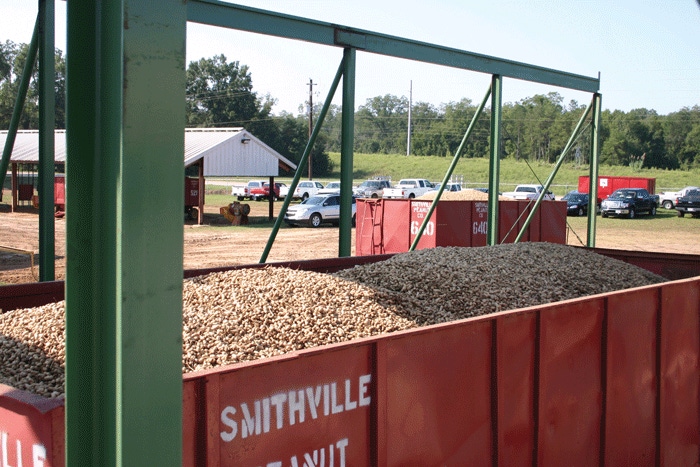January 7, 2013

The peanut industry is a vital economic engine for many rural economies in the Southeast.
Trouble is, it tends to run in fits and starts, resulting in a bumpy ride for those who are dependent on it.
“Over the past several years, the engine has been running at many different speeds, all dependent on supply and demand and the impact of high production years on the acreage and total production in following years,” says Marshall Lamb, research director at the National Peanut Research Laboratory in Dawson, Ga.
The United States peanut industry, says Lamb, generates approximately $4 billion annually in economic activity, and much of this activity is located in rural areas that are directly dependent on peanuts to sustain rural economies and foster rural economic development.
“Our industry is a vital component of the economic engine that supports these rural economies,” adds.
Taking a look back at what has led the peanut industry to where it is now will give us an idea of where we’re headed in 2013, says Lamb.
“In reality, all of this started in 2008 when we delivered a 2.58 million ton crop that led to a carryout of more than 1 million tons going into 2009.”
Carryout, he says, is the amount of peanuts carried forward from one crop year to the next, basically reflecting the amount of peanuts available to keep the mills supplied from August until October.
“In the United States, we have a shelling capacity of 165,000 tons per month which means we need a carryout of at least 500,000 tons for this three- month period.
“Although production in 2009 was down, the amount of peanuts carried in from 2008 led to a carryout of more than 900,000 tons going from 2009 into 2010.
“Then, in 2010 and 2011, we had back-to-back droughts that led to significant problems in peanut quality resulting in high losses in processing due to re-milling and blanching.
“Supplies of edible quality peanuts quickly tightened which led to the price un-contracted farmer stock peanuts in 2011 reaching the $1,000-per-ton mark, as shellers and manufacturers scrambled to secure peanuts, says Lamb.
Spilled over into 2012
This then spilled over into 2012, when early contracts were offered at about $700 to $750 per-ton to secure more acreage to get supply back in balance with demand, he says.
“We responded and planted more acres and planted just over 1.5 million acres and were blessed with some ideal growing conditions during the season,” says Lamb.
“I’ve heard a lot of people jokingly say, ‘I wonder what these new peanut varieties would yield in a good growing season?’” Well, he says, we’ve found out. Record yields were reported for both irrigated and non-irrigated peanuts from throughout the Southeast.
“This has led us to record-high production in 2012, exceeding the 3-million-farmer-stock-ton mark.
“No one is sure right now where the final production number will land. But the math is simple — we have a much over-supplied market. In just one year, we went from basically no edible quality carry out to producing a crop exceeding 3 million tons and basically flooding the market.”
With the U.S. peanut supply where it is and the amount of time it will take to shell and move the 2012 crop, Lamb doesn’t think farmers should expect attractive contract offers going into 2013. “By attractive, I mean a price that will cover all costs of production and leave a decent return, and a price that will be competitive with other crops that farmers can plant.”
At the time of this writing, the 2013 prices for cotton, corn, soybeans and wheat were $0.765, $6.60, $13.50 and $8.79, respectively.
“A lot can happen with these prices between now and planting, and more so between now and the 2013 harvest. The question is, how do they translate into competitive peanut offers such that the returns per acre are equal?”
No one is sure, says Lamb, what contract offers will be made prior to planting the 2013 peanut crop.
“And I’m certainly not going to speculate at all about this because there are too many things that can happen prior to then. Our export numbers are up, hopefully we’ll see steadily increasing domestic usage of peanuts, Argentina has just started their 2013 production season, and we’ll have to see the quantity and quality that they produce, along with many other factors.”
The outlook going into 2013 is that peanut producers delivered a huge, high-quality crop in 2012, and there will be a reduction in acres in 2013.
“The question is how much reduction we will need to get supply and demand back into a reasonable balance.
“We’ll need to wait a couple of months to let the 2012 harvest get completed and assess where we are at. Fortunately, the prices for alternative crops do offer some relief for producers.”
About the Author(s)
You May Also Like




